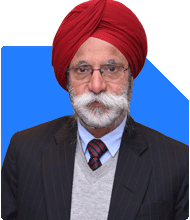Ramalingam Kalirajan |10219 Answers |Ask -Follow
Mutual Funds, Financial Planning Expert - Answered on May 29, 2024
He has an MBA in finance from the University of Madras and is a certified financial planner.
He is the director and chief financial planner at Holistic Investment, a Chennai-based firm that offers financial planning and wealth management advice.... more

Hi Sir, I am 45 years now, I have these monthly SIP. Nippon India Large Cap Fund Rs.12000, Aditya Birla Sun Life Flexi Cap Fund - G Rs.4000, ICICI Prudential Technology Fund - G- Rs.12000, Axis Small Cap Fund Rs.12000, Nippon India Small Cap Fund - G Rs.4000 . Please review my portfolio and advice according to my son's advance studies in 7 years and retirement plan in 15 years.
Assessment of Current Portfolio
Your current investment portfolio reflects a diversified approach, with allocations across various fund categories, including large-cap, flexi-cap, technology, and small-cap funds. This diversification aims to balance risk and potential returns.
Evaluation of Asset Allocation
Your portfolio has a significant exposure to equity funds, which indicates a growth-oriented strategy. While equity investments have the potential for higher returns over the long term, they also carry higher volatility and risk.
Analysis of Fund Selection
Your choice of funds reflects a blend of growth potential and risk management. However, it's essential to assess each fund's performance, consistency, and alignment with your financial goals.
Assessment of Investment Horizon
Considering your son's advanced studies in seven years and retirement planning in fifteen years, it's crucial to evaluate your investment horizon and risk tolerance.
Recommendations for Future Adjustments
Review and Rebalance: Periodically review your portfolio to ensure it remains aligned with your goals and risk tolerance. Rebalancing may be necessary to maintain the desired asset allocation.
Goal-based Investing: Segment your investments based on specific goals, such as your son's education and retirement. This approach ensures a tailored investment strategy for each objective.
Risk Management: Given the relatively short time horizon for your son's education, consider gradually shifting a portion of your equity investments into more stable options as the goal approaches. For retirement planning, maintaining a diversified portfolio with exposure to equities for long-term growth potential is advisable.
Professional Guidance: Engage with a Certified Financial Planner (CFP) who can provide personalized advice and assist you in optimizing your investment strategy based on your financial objectives and risk profile.
Conclusion
In summary, while your current portfolio demonstrates a diversified approach, it's essential to periodically review and adjust your investments to ensure they remain aligned with your evolving financial goals. By implementing a goal-based investment strategy and seeking professional guidance, you can enhance the likelihood of achieving your objectives.
Best Regards,
K. Ramalingam, MBA, CFP,
Chief Financial Planner,
www.holisticinvestment.in
You may like to see similar questions and answers below
Dev Ashish | Answer |Ask -Follow
MF Expert, Financial Planner - Answered on Aug 24, 2023
Ramalingam Kalirajan |10219 Answers |Ask -Follow
Mutual Funds, Financial Planning Expert - Answered on May 25, 2024
Ramalingam Kalirajan |10219 Answers |Ask -Follow
Mutual Funds, Financial Planning Expert - Answered on Aug 05, 2024
Ramalingam Kalirajan |10219 Answers |Ask -Follow
Mutual Funds, Financial Planning Expert - Answered on Sep 14, 2024
Dr Nagarajan J S K |2257 Answers |Ask -Follow
NEET, Medical, Pharmacy Careers - Answered on Aug 11, 2025
T S Khurana |502 Answers |Ask -Follow
Tax Expert - Answered on Aug 11, 2025
T S Khurana |502 Answers |Ask -Follow
Tax Expert - Answered on Aug 11, 2025
Nayagam P P |10168 Answers |Ask -Follow
Career Counsellor - Answered on Aug 11, 2025
Radheshyam Zanwar |6277 Answers |Ask -Follow
MHT-CET, IIT-JEE, NEET-UG Expert - Answered on Aug 11, 2025
Nayagam P P |10168 Answers |Ask -Follow
Career Counsellor - Answered on Aug 11, 2025
Nayagam P P |10168 Answers |Ask -Follow
Career Counsellor - Answered on Aug 11, 2025
Nayagam P P |10168 Answers |Ask -Follow
Career Counsellor - Answered on Aug 11, 2025
Nayagam P P |10168 Answers |Ask -Follow
Career Counsellor - Answered on Aug 11, 2025
Nayagam P P |10168 Answers |Ask -Follow
Career Counsellor - Answered on Aug 11, 2025




















